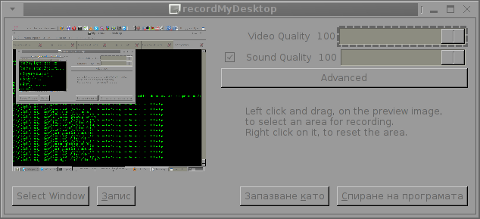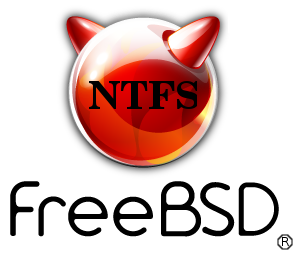
Two articles, before I've blogged on how one can take pictures from console / terminal with ffmpeg. It was interesting fact, I've stumbled on ffmpeg is able of capturing video executed from terminal or plain console TTY.
The command to do so is:
# ffmpeg -f video4linux2 -r 25 -s 640x480 -i /dev/video0 webcam-movie.avi
FFmpeg version SVN-r25838, Copyright (c) 2000-2010 the FFmpeg developers
built on Sep 20 2011 17:00:01 with gcc 4.4.5
configuration: --enable-libdc1394 --prefix=/usr --extra-cflags='-Wall -g ' --cc='ccache cc' --enable-shared --enable-libmp3lame --enable-gpl --enable-libvorbis --enable-pthreads --enable-libfaac --enable-libxvid --enable-postproc --enable-x11grab --enable-libgsm --enable-libtheora --enable-libopencore-amrnb --enable-libopencore-amrwb --enable-libx264 --enable-libspeex --enable-nonfree --disable-stripping --enable-avfilter --enable-libdirac --disable-decoder=libdirac --enable-libschroedinger --disable-encoder=libschroedinger --enable-version3 --enable-libopenjpeg --enable-libvpx --enable-librtmp --extra-libs=-lgcrypt --disable-altivec --disable-armv5te --disable-armv6 --disable-vis
libavutil 50.33. 0 / 50.43. 0
libavcore 0.14. 0 / 0.14. 0
libavcodec 52.97. 2 / 52.97. 2
libavformat 52.87. 1 / 52.87. 1
libavdevice 52. 2. 2 / 52. 2. 2
libavfilter 1.65. 0 / 1.65. 0
libswscale 0.12. 0 / 0.14. 1
libpostproc 51. 2. 0 / 51. 2. 0
Like you can see in accordance with WebCamera maximum supported resolution, one can change 640×480 to higher in case if attached expensive HD webcam.
Note that the webcamera should not be in use when issuing the command, otherwise because /dev is used you will get:
[video4linux2 @ 0x633160] Cannot find a proper format for codec_id 0, pix_fmt -1. /dev/video0: Input/output error
It is another interesting, topic I thought if if i t is possible to somehow caputre the Video streamed currently, whether for example in Skype there is a Skype conference established, but unfortunately it is not possible to do it with ffmpeg, cause /dev/video0 is in use while Skype Video stream flows.
There is another way to record Skype and other Programs recording from the WebCam (i.e. Cheese) by using a small command line tool recordmydesktop.
To use recordmydesktop to save (record) Skype Video Conference just run it in advance and afterwardsmake your Skype call. To capture input from the WebCam while it is in use there are two other GUI instruments capturing the Active Desktop – e.g. Istanbul and vnc2swf. If you never used any of those and you want to read short review on them check out my older article – Best Software Available Today for GNU / Linux Desktop capturing on Debian
The The little problem with recording the desktop is that if you want to record the Skype conference and straight use the software you will catch also the rest of the Desktop, however it is possible to set recordmydesktop to record content from a Windows with specific ID, so recording only skype Video should be possible too.
I was intrigued by the question if after all Video Capturing is possible while Video is Streamed from WebCam with ffmpeg, so did a quick research for the command line freaks, here is how:
ffmpeg -f x11grab -s `xdpyinfo | grep -i dimensions: | sed 's/[^0-9]*pixels.*(.*).*//' | sed 's/[^0-9x]*//'` -r 25 -i :0.0 -sameq recorder-video-from-cam.avi
The only problem with this command line is the video captured from webcamera will be without sound. To take the Video and Sound input with ffmpeg use:
ffmpeg -f alsa -ac 2 -i pulse -f x11grab -r 30 -s 1024x768 -i :0.0 -acodec pcm_s16le -vcodec libx264 -vpre lossless_ultrafast -threads 0 mydesktop.mov
On Debian and Ubuntu Linux, there is also GUI recordmydesktop the package name to install is gtk-recordmydesktop. GTK-RecordMyDesktop, works pretty well, so probably for people looking for convenience and ex-Windows GUI oriented Linux
users it is best choice.
To use it on Debian:
# apt-get --yes install gtk-recordmydesktop
and launch it with cmd:
# gtk-recordmydesktop

As you can see in above, screenshot GTK-Screenshot can select a Certain Window on Desktop to record, so with it it is a piece of cake to:
1. start the Skype Video conference
2. Launch gtk-recordmydesktop
3. Press Select Window and Select Skype Video Stream
I'm curious if the pointed Skype + gtk-recordmydesktop, method to capture Skype Active videos will be working on FreeBSD. Unfortunately I don't have FreeBSD Desktop with attached WebCam to give it a, try I will be very thankful, if someone using FreeBSD / NetBSD happen to read this article and take few minutes to test if it works and drop a comment below.
That's all, Enjoy, your captured video with sound 😉





